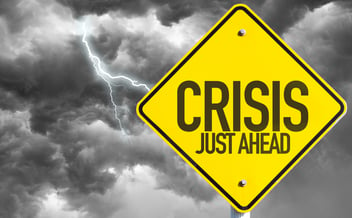In the last couple of years, we have seen a lot of people resort to putting up their own small business in order to stay afloat. When the pandemic broke out late 2019 (early 2020 for some countries), a lot of people lost their jobs, and a lot of jobs’ usefulness have been questioned.
This phenomenon gave rise to more and more small businesses. Small businesses sprang like mushrooms! Drop-shipping, online selling, coffee and food delivery services, among others, have become such a huge hit that even post-pandemic, they have been proven as income-generating, highly profitable, albeit small business.
How millions of families survived the Covid pandemic can be traced back to the existence of small businesses all over the world. Before we dive further into the topic, let’s first clarify, what qualifies as a small business anyway?
What Qualifies as a Small Business?
By definition, a small business is one that has fewer employees and generates less revenue than most regular-sized corporations. Examples of small businesses include retail operations such as convenience stores, small grocery stores, bakeries or delicatessens, hairdressers or tradespeople such as carpenters and electricians; restaurants, motels, photographers, very small-scale manufacturing, and Internet-related businesses such as web design and computer programming.
Small businesses are independently owned organizations that require less capital and less workforce and less or no machinery.
Stages of Small Business Growth
Many small businesses out there differ from each other in a lot of aspects, you would think that because they are totally different, that they differ in everything else, but no. Small businesses go through the same small business challenges all the time, that onlookers of the small business arena have come up with a map to scale small business growth.
Below, we have mapped out small business growth in stages:
The Existence Stage
This is where it all begins. Fresh from conception, in this stage, small business challenges can be felt right from the start that none of the fancy things that owning a business entails is prioritized by the owner, who is often the sole-proprietor. He/she does everything, sometimes he/she has a few employees, but being the owner of a small business, he/she does much of the legwork.
The priority in this stage is attracting customers, existing, and surviving. There would barely be any system in place.
The Survival Stage
The second stage in small business growth is the survival stage. Here, there is an ample number of good days that indicate your product or services offered are viable. Systems have slowly emerged in the process of surviving each day of business but they remain simple. There would be enough days when you break even, but in the back of a small business owner's head is the question: can we do more than just break even?
The Initial Success Stage
By the time you hit this stage, you have already reached an admirable level of small business growth. The small business can now support itself despite the occasional small business challenges and small business problems encountered. There is a functional system that sets everything in motion, the owner now can decide whether to step back and allow the small business to function independently or increase activity and production so as to catapult the business to larger growth.
The Growth Stage (Scale-up)
At the success stage small business owners choose between stepping back a little and growing their business all the more. If they picked the latter, they will then find themselves in this stage, where expansion and growth become more immediate. Should attempts at expansion succeed, the small business now becomes a big one.
The Maturity Stage
This is the stage that comes after you have surpassed the preceding difficult stages. The baptism by fire is over, you have done more than just survive, you thrived! Here, leadership over the business is now shared by several stakeholders, the systems in place are all working well, and the business has a sizable market share.
Common Small Business Problems
A small business is often an idea concocted by the most innovative and creative of minds. With a capital that is generally smaller than what is normally needed to fund larger companies, there are plenty of small business problems and small business challenges that a small business owner must surpass before gaining stability.
Here is a list of some of the most common small business problems and challenges experienced by small business owners:
- Obtaining Customers - As a new business, nobody has tried and tested your brand just yet. Nobody knows if you are any good. Among the most common small business challenges faced by small business owners who are just starting out at running a business, is generating leads/customers.
- Lack of a Functional System - New small business owners almost always have just one thing in mind, to generate enough cash flow so as to make ends meet. This means that most of the time, small businesses don’t really have a clear and working system just yet. The way orders are taken and delivered can sometimes be a bit chaotic, payment systems are not uniform, etc.
- Cash Flow - If you have a hard time obtaining customers, then chances are, the cash flow is not as steady either, which is hard because most small businesses that are just starting out need cash flow to stay afloat.
- Marketing - It is also hard to market and advertise when you are new. Nobody knows you. It would take a lot of effort to build a brand and earn consumer trust.
Final Take: What’s Between Survival and Success?
Between the survival stage and the success stage lies a garden called GRIT.
To get past the difficult, unstable, and uncertain stages, a small business owner must showcase a lot of grit. That’s the only thing that could take them from the first stage to the last, where greater rewards await.

 What are the 5 Stages of Small Business Growth?" loading="lazy">
What are the 5 Stages of Small Business Growth?" loading="lazy">


